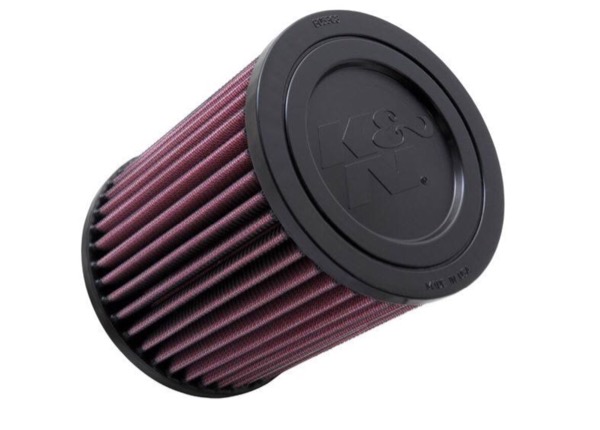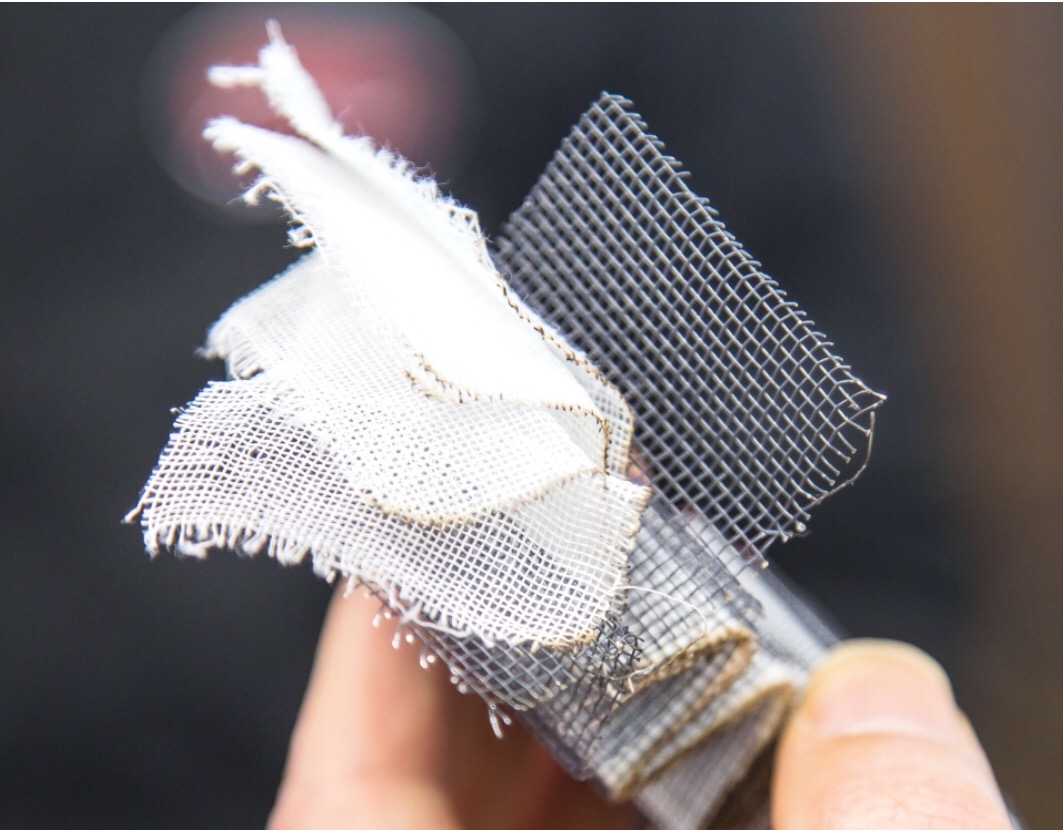
|
|
The ubiquitous K&N brand gauze air filter. This is a fantastic product if you are informed; if you understand the tradeoff.
|
I am alarmed at the lack of wisdom many exhibit in choosing to replace their original equipment air filter with the K&N product. I fear most folks are led down a path, as it were, and are thus ill-equipped to make a fully informed, eyes-wide-open choice.
Construction
The K&N and its handful of copies (the similar but pricier Italian-made BMC--very visible in MotoGP and Formula 1, among others) are made of an open-weave cotton cloth, a material not very different from medical gauze. Looking a lot like coarse cheesecloth, this cotton weave is the main part of the filter. This is reinforced by outer and inner layers of large-pore metal screen. The layered construction is then uniformly pleated for maximum surface area, and made rigid and sealed at each end with rubber molding, and you have the air filter. Well-made, handsome, durable. And a very effective product at what it does.
Effectiveness as an air filter
But that doesn't include filtering air. Rocks, maybe, small animals. But it's really not much of an air filter. The standard test, developed generations ago, for the replaceable air filter is to hold the filter up to a naked 60-watt incandescent light bulb and determine whether light is visible (car repair shops in the 60s and 70s all had special boxes with light bulbs in them for testing air filters). Though the powersports industry largely seems to be ignorant of this, attempting as it does to judge a paper air filter by relying on visual clues, as with many things on Internet forums this is bogus. Using the light bulb test, the more light that is visible, the cleaner the filter. And visa-versa. It's that simple, and it removes objectivity and guessing. In fact, this is the only legitimate test of an air filter. Using then this same testing criteria for the gauze filter, you will discover something alarming. Properly cleaned and oiled, through a gauze filter you can not only see a lot of light, you can see the friggen' light bulb! What's the point? Just this. The K&N filter's claim to fame, its raison d'Ítre (reason for existing), is the extra air it allows into the engine. And it gets that extra air by having huge holes. Focusing on anything else about this filter type is disengenuous. Ignore that nonsense about reusability being its main feature. That is not why the K&N was developed; it isn't even the key point in K&N's marketing. Nor is it true. The K&N was created (in California by a desert-racing Kawasaki dealer) to supercharge the engine. That's it.

|
|
The construction of the gauze type air filter. It's a pretty porous, open-flow design. If it weren't for the oil applied before use that makes the gauze sticky, you couldn't call this a filter. You are oiling it, right?
|
Supercharging
The word supercharge or supercharger evokes some pulse-pounding, sweaty lip excitement among gearheads. As well it should. However, the word means simply super = more than normal, and charge = the dose of air the engine is able to swallow during one induction cycle. The word "supercharge" denotes getting more air into the engine than normal, and that is what the gauze air filter in fact does. It supercharges the engine. It gets more air into the engine than does the stock air filter. Pretty cool because, if accompanied by requisite changes in fueling, this is a significant benefit. The engine makes more power. No doubt about it.
Choice
As a career mechanic I can appreciate what the gauze air filter does. Correctly installed, certain models of K&N filters on certain powersports engines respond very well, exhibiting noticeable increases in acceleration. I have no argument with that. And as I say, I continue to work with K&Ns. However, the user should have a choice. He should be informed as to what he is actually doing, where the added performance (if any) is coming from, and what the consequences are of getting it in this way. It's like a narcotic in the sense that the thrill comes with consequences.
Consequences
The gauze filter passes more air by passing more dirt--much more. Experience has shown that top end wear is increased, but more important and more insidious is bottom end wear because it is not expected and is more serious. Grit in the bottom end wears bearings. More subtly however, it also wears the cam chain. The worn chain results in retarded cam timing, which reduces cylinder compression. Lawsuits have been exerted against OEMs because they deny warranty benefit after determining the customer used a gauze air filter. Gauze filters are not beloved among the Big Four.
Carburetor rejetting
Gauze air filter elements, single cartridge or individual, require carburetor rejetting. Don't overlook that. Individual, i.e. one on each carb, gauze filters, increase airflow dramatically, requiring in many engines a 10-mainjet size jump (in the case of the CBX)! Moreover, running individual filters is exactly equal to running open carbs (the required carburetor jetting is exactly the same for individual filters as for open carbs).
Reusability
Even the gauze air filter makers' claims of reusability are doubtful. The filter is not cleanable with common detergents, and even the repeated use of the proprietary cleaner followed by water tends to swell and wear out the cotton mesh, leading to reductions in air flowability. The filter loses its flowability advantage over the stock filter quickly. Also, a special oil is needed to maximize the filter's dust-trapping ability. Leaving off the oil will render the filter even less capable than it already is.
Summary
If you accept the product's premise, that of trading engine longevity for potentially a bit more performance, then great. If you are however looking for a filter that is the same as stock only washable, look elsewhere. That is not what the gauze filter is about, despite the manufacturer's claims. Instead, it is a race-day air filter that in its original context was and is a good product. But it never should have made prime time, because that has caused many to misunderstand and overvalue it.
Postscript 2020:
You will appreciate my surprise when several months ago I received a notice in my email inbox from the K&N company encouraging me to read their October 22 blog, "What Happens If Dirt Gets In Your Engine?" Pretty ironic. The K&N product causes excessive dirt to get into the engine. And oddly, while piston and cylinder wear is recognized in the blog as critical, crankcase contamination resulting in accelerated cam chain wear is completely ignored. Too bad.
|

 ®
®

